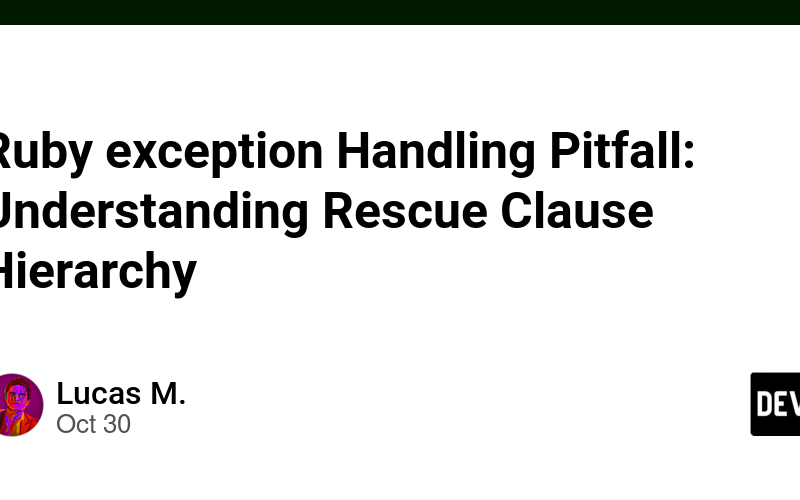Context
Let’s consider the following code, defining basic classes and one custom error:
class CustomError < StandardError; end
class Parent
def raise_custom_error
raise CustomError
rescue StandardError
puts "StandardError rescued"
end
end
class Child < Parent
def call
raise_custom_error
rescue CustomError
puts "CustomError rescued"
end
end
Now, let’s examine the following method call::
Child.new.call
To summarize, this code does the following:
- Defines a
CustomErrorclass that inherits fromStandardError - Creates a
Childclass with a#callmethod that invokesraise_custom_errorfrom its parent classParent - Implements exception handling in both
Child#callandParent#raise_custom_error
Given this setup, we might expect the exception handling mechanism in Child#call to be triggered, as it appears to be the most specific. However, the actual output of the call is:
StandardError rescued
Surprisingly, we end up executing the more generic error handling defined in Parent#raise_custom_error.
How Rescuing Works
When Ruby encounters a raise statement, it looks up the call stack for matching rescue clauses. It checks whether the raised exception is a subclass of any exception specified in the rescue clause.
Explanation of the behaviour
The output “StandardError rescued” occurs because:
- When
Parent#raise_custom_errorraisesCustomError, Ruby looks for matching rescue clauses in the method where the exception was raised - It finds the
rescue StandardErrorclause inParent#raise_custom_error - Since
CustomErrorinherits fromStandardError, thisrescueclause matches and handles the exception - By the time execution returns to
Child#call, the exception has already been handled, so the rescueCustomErrorclause inChild#callnever gets a chance to execute
Conclusion
Error-rescuing blocks cannot be written completely agnostically of the current class hierarchy. The order and specificity of rescue clauses matters due to exception inheritance.
When dealing with exceptions raised in parent classes, the rescue block in the parent class may catch exceptions before they reach the child class.
To avoid such scenarios, we can apply a principle related to exception hierarchy, which is closely tied to the Liskov Substitution Principle (LSP). The LSP states that subtypes should be substitutable for their base types, meaning that any code using a parent class should be able to work with a child class without knowing the difference.
In the context of exception handling specifically:
- More general exceptions should be caught at lower levels in the call stack or inheritance hierarchy.
- More specific exceptions should be caught closer to where they are raised.
Source link
lol

